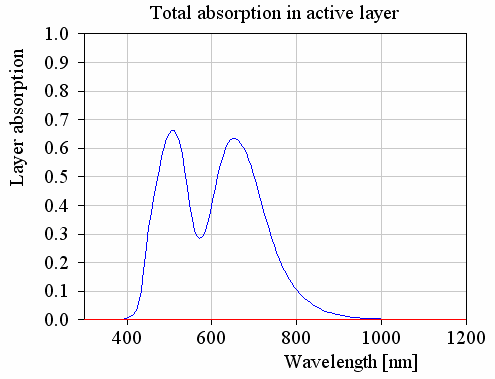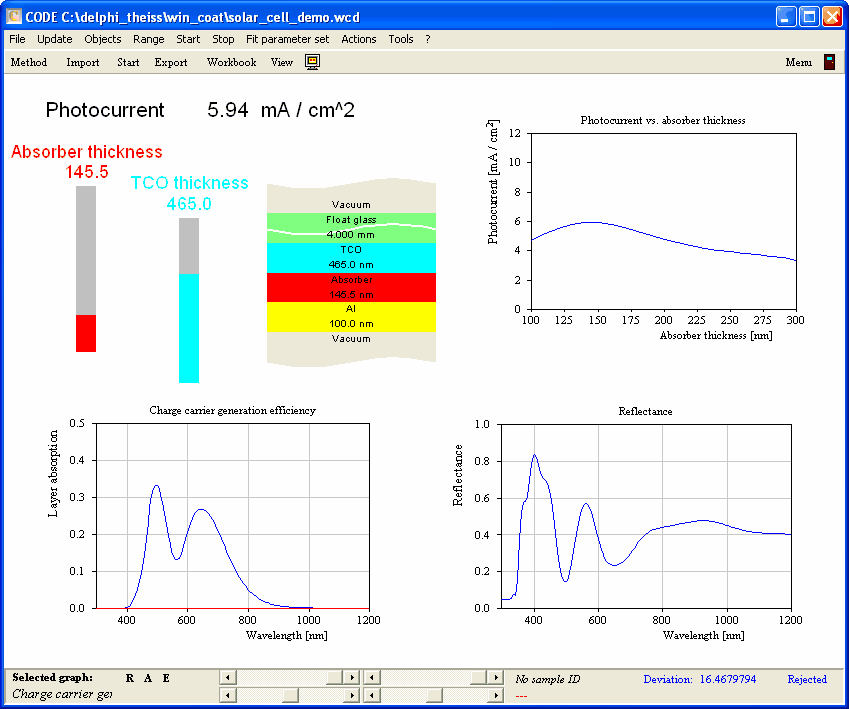Objects of type 'Photocurrent' compute the current density generated by absorption of light in a layer. You must assign a spectrum of type 'Charge carrier generation' to a photocurrent object to make it work correctly. Please see the 'SCOUT technical manual' for documentation of this spectrum type.
When you edit a photocurrent object, you should set its unit to 'mA / cm^2'. The Edit procedure will ask you to specify the total illumination power (in W/m^2). Afterwards you have to set the spectral distribution of the illuminating radiation in the following window:

The example shows the normalized AM 1.5 spectrum. You do not have to care about normalization of the input spectrum - photocurrent objects normalize the distribution function before they use it for their computation.
Photocurrent objects compute for each spectral point the number of generated charge carriers and integrate over the whole input spectrum. The final number is the current density in mA / cm^2.
Application example
The following example shows the optimization of a simple solar cell layer stack. The illuminating beam is incident from the top through a 4 mm glass pane. Underneath a transparent conductive layer (TCO) of several 100 nm thickness the active layer which is to convert sunlight to electrical current is placed. A aluminum layer at the bottom of the stack provides electrical contact on the backside of the active layer.
The active layer is equipped with a fictitious material which absorbs in the visible spectral range. Its complex refractive index shows two main absorption bands around 500 and 700 nm wavelength:

The light absorption of the active layer with 150 nm thickness (TCO thickness is 500 nm) is this:

Usually not all absorbed photons generate a charge carrier. The conversion efficiency may be much less than 1 and depend on details like the thickness of the active layer. In order to take into account a thickness dependent efficiency, the efficiency of the charge carrier generation spectrum is computed according to a user-defined formula. In this case the efficiency is simply a constant C1 where C1 is one of the possible fit parameters of the efficiency object.
With the help of a master parameter called 'Absorber_thickness' the coupling of layer thickness and efficiency can be expressed in CODE. The fit parameters for the optimization of the photocurrent are the following:

As shown above, the thickness of the layer is simply computed as Absorber_thickness, whereas the efficiency linearly decreases with thickness following the relation 0.7-Absorber_thickness/600.
Setting a target value of 10 mA/cm^2 for the current density in the list of integral quantities, the fit optimizes both the TCO and the active layer thickness with the following best result:

The upper right curve showing the relation of absorber thickness and photocurrent with fixed TCO thickness has been obtained using the 'Parameter variation' mechanism (see SCOUT manual) and a view object which displays workbook data (the results of the parameter variation).